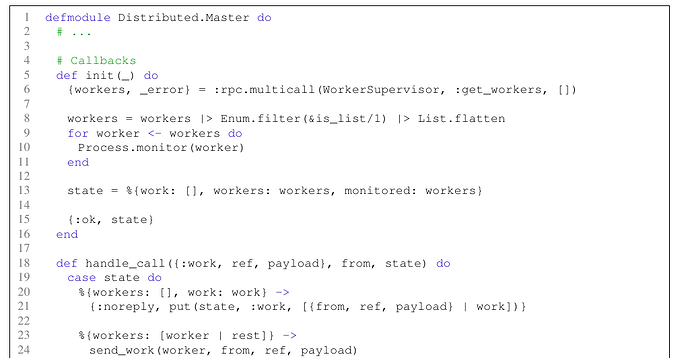I made some minor changes to this, and ended up with highlighted keywords. The only downside is that a keyword needs to be followed by a space to make the parser happy.
\lstdefinelanguage{elixir}{
morekeywords={case,catch,def,do,else,false,%
use,alias,receive,timeout,defmacro,defp,%
for,if,import,defmodule,defprotocol,%
nil,defmacrop,defoverridable,defimpl,%
super,fn,raise,true,try,end,with,%
unless},
otherkeywords={<-,->, |>, \%\{, \}, \{, \, (, )},
sensitive=true,
morecomment=[l]{\#},
morecomment=[n]{/*}{*/},
morecomment=[s][\color{purple}]{:}{\ },
morestring=[s][\color{orange}]"",
commentstyle=\color{commentgreen},
keywordstyle=\color{eminence},
stringstyle=\color{red},
showstringspaces=false,
}
I have put an entire minimal example online here: Elixir Listings Latex · GitHub
The rendered output looks as follows:

























